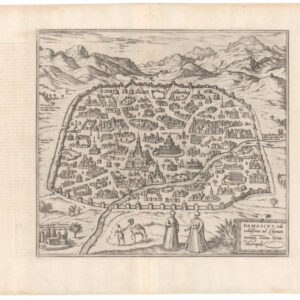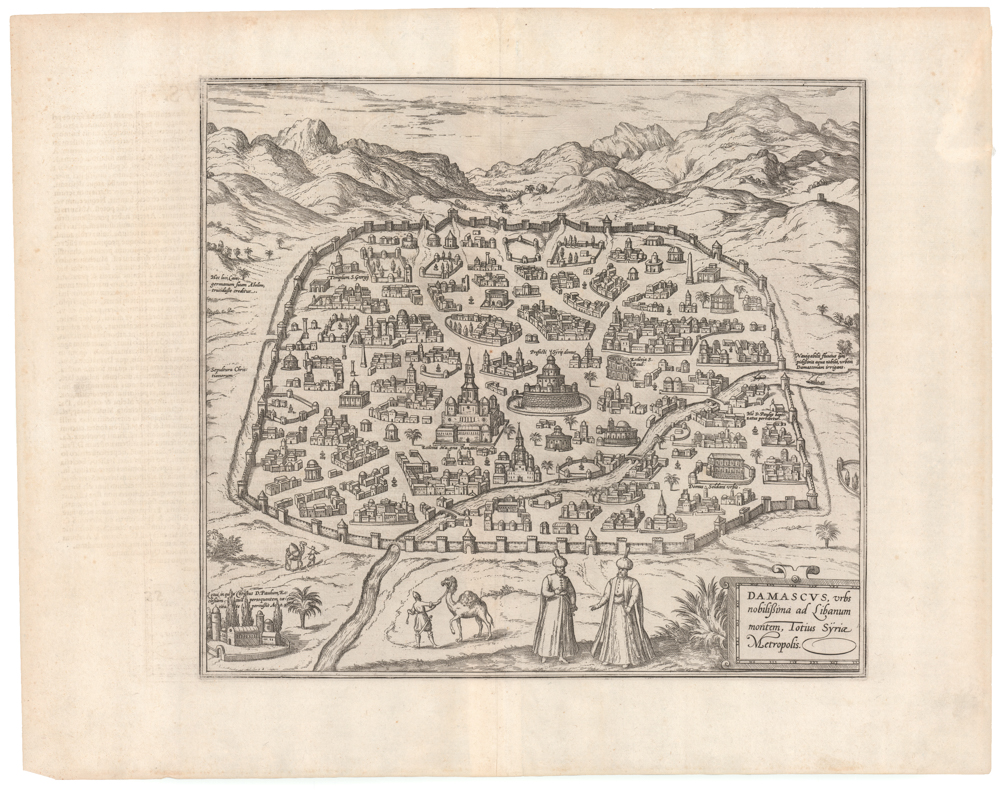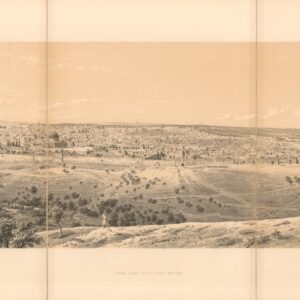Description
During the British Protectorate Era in the Middle East (broadly, 1882-1956), the Survey of Egypt was set up as the official state survey department in the region. Based in Cairo, the Survey of Egypt issued maps and charts of large parts of the Middle East, including the French-controlled regions of Lebanon and Syria (French mandate in Syria and Lebanon lasted from 1923 to Arab independence in 1946). These were usually interconnected multi-purpose charts showing topography, toponyms, and basic infrastructure – including features explicitly needed for military purposes.
This sheet is the Survey of Egypt map of the area south of the Syrian city of Homs. Produced at a scale of 1:125.000 and printed in manageable dimensions (73 x 51 cm), the Survey of Egypt maps formed an up-to-date cartographic basis for British interests in the region. While only a few details of the actual city are rendered at this scale, many features associated with Homs are visible on the map (e.g., Homs Citadel and the Sidi Khaled mosque, and the French Barracks on the northern outskirts of town). More interesting perhaps is the inclusion of Lake Qattinah just southwest of the city. This artificial lake, created by a dam across the Orontes River, dates back to furthest antiquity. The visible ruins of the Roman dam stand on submerged remains far older than that, and the lake is one of the world’s most extraordinary surviving testimonies to the skill and vision of ancient builders.
Moving south from Homs itself, we find the region less densely inhabited than neighboring coastal regions. In fact, the most densely occupied area of the map – apart from Homs itself – are the lush valleys to the west and southwest, towards Tartus and into the north Lebanese Akkar Province. Here is where the mighty Orontes finally breaks up into smaller run-offs percolating towards the coast and creating some of the most fertile and rich agricultural lands in the entire Middle East. To the south of Homs, the Syrian badiyah or steppe stretches down towards Damascus, which lies well outside this map’s scope.
Among the most famous locations on the map, we find the ancient city of Baalbek in the lower-left corner. Still the archaeological crown jewel of Lebanon’s cultural heritage portfolio today, Baalbek was already renowned for the monumentality of its ruins during the Victorian period, and European travelers had been coming here for decades when this particular map was drawn up. Among the many visitors were the German Kaiser Wilhelm II and his wife (1898).
Despite the accurate place names and the inclusion of infrastructure, the map is essentially topographic in its expression. Rivers and streams are clearly indicated and, in most cases, labeled. Moreover, most elevations have height measurements added. The map could nevertheless also have been used as a decent road map at the time of its publication. Different types of roads are shown on the map, including those suited for military transport or those made impenetrable by seasonal rains.
The fact that mobility conditions could change rapidly in this period and region is seen in the note in red at the very bottom of the sheet. This note states that the road information contained on this map is relevant at least until October 1918 (i.e., shortly after the First World War). Roads are not the only infrastructural elements depicted; other essential features of potential military interest include railways and telegraph lines and natural and constructed sources of potable water in the landscape.
This map is connected to our Survey of Egypt map of Tripoli and Surroundings (NL-01069).
Cartographer(s):
Survey of Egypt was the official state survey department in the period of the British Protectorate, based in Cairo.
Condition Description
Backed. Some crimping on sides.
References
![[Jerusalem Drawing]](https://neatlinemaps.com/wp-content/uploads/2023/05/NL-01488_thumbnail-300x300.jpg)


![[Old Damascus]](https://neatlinemaps.com/wp-content/uploads/2019/09/NL-00657-scaled-300x300.jpg)
![[Old Damascus]](https://neatlinemaps.com/wp-content/uploads/2019/09/NL-00657-scaled.jpg)
